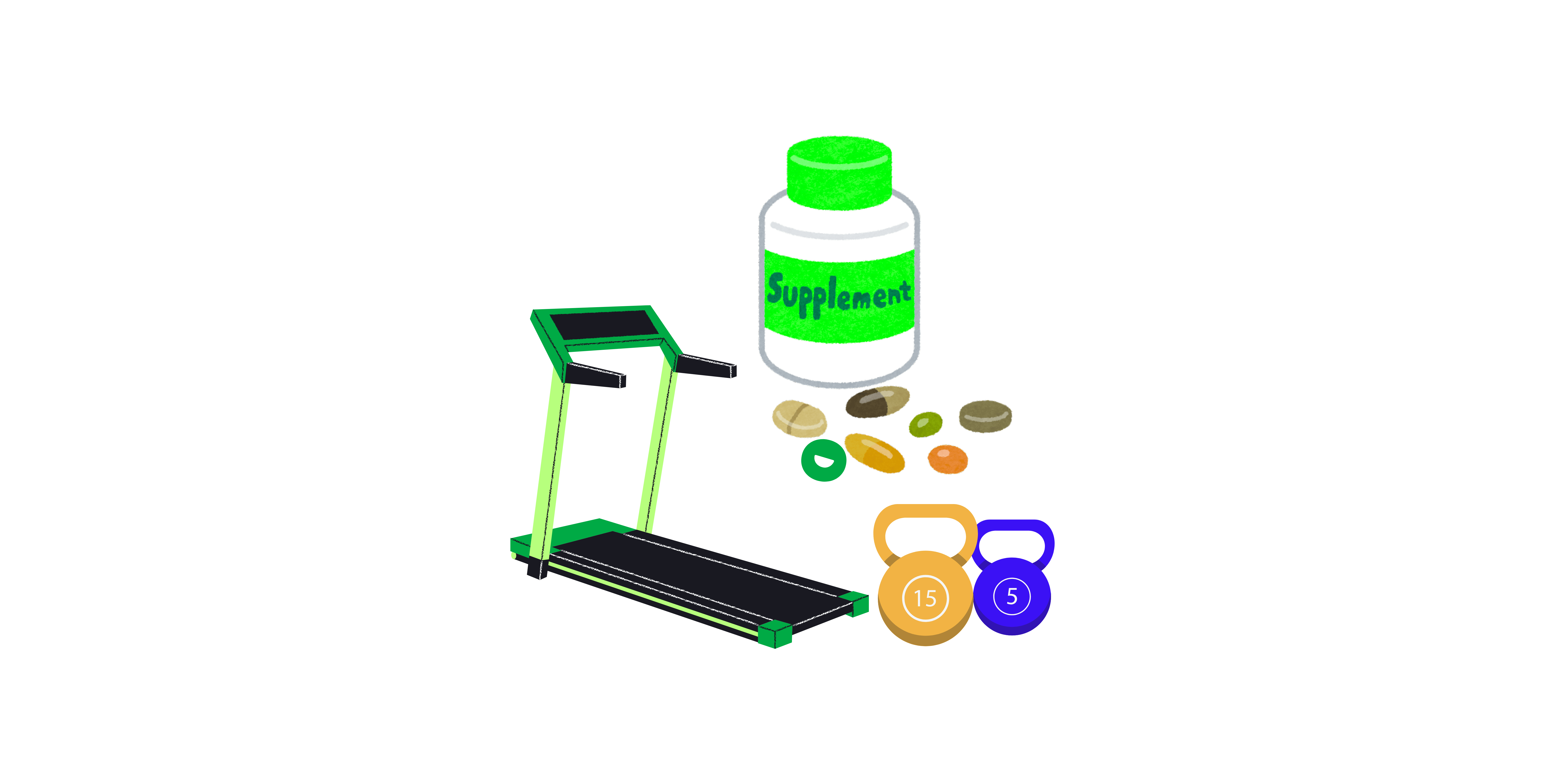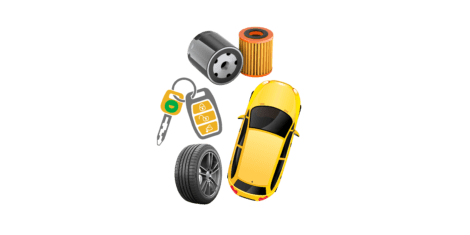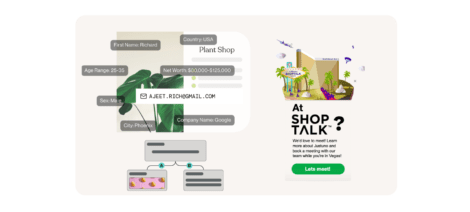This industry blog is quite possibly the most expansive we’ll write because the health & fitness or health & wellness industry is so encompassing. From workout equipment to self-care tools like saunas and vitamins/supplements, so many brands and websites fall into this category.
Each area has their own considerations—some are big-ticket items with extremely costly shipping considerations while others are highly regulated with little ability to traditionally advertise like some supplements.
But business is booming with the market expected to reach $8.99 trillion U.S. dollars by 2028. At its core the power of the DTC brand experience is the website and its messaging to visitors. It’s more important than ever for health & fitness brands to have dialed-in on-site messaging and promotion strategies.
Health & fitness brands that use Justuno see an average increase in time on site of 4.4 minutes with visitors that engage with a pop-up. This is up from the two-minute average without any messaging – imagine how much better your store would convert if visitors were on there for an additional four minutes!
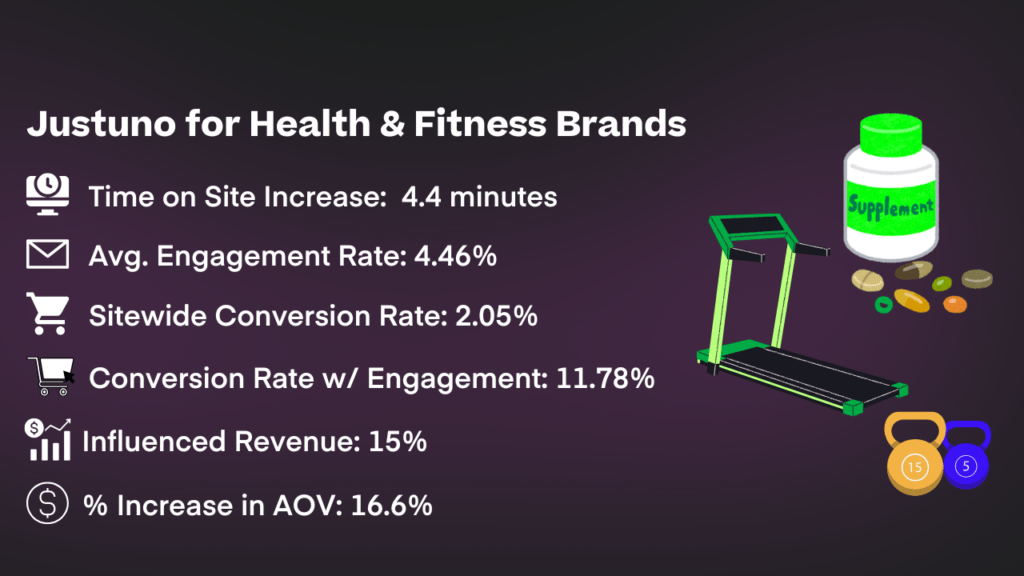
Meanwhile, the average opt-in rate is 4.46%, with an overall conversion rate around 2%. However, sales jump up to nearly 12% with visitors who engage with a promotion and to 18% when that promotion is a lead capture. These leaps are the result of strategic messaging used to elevate the customer experience and, in turn, improve all of your other marketing efforts.
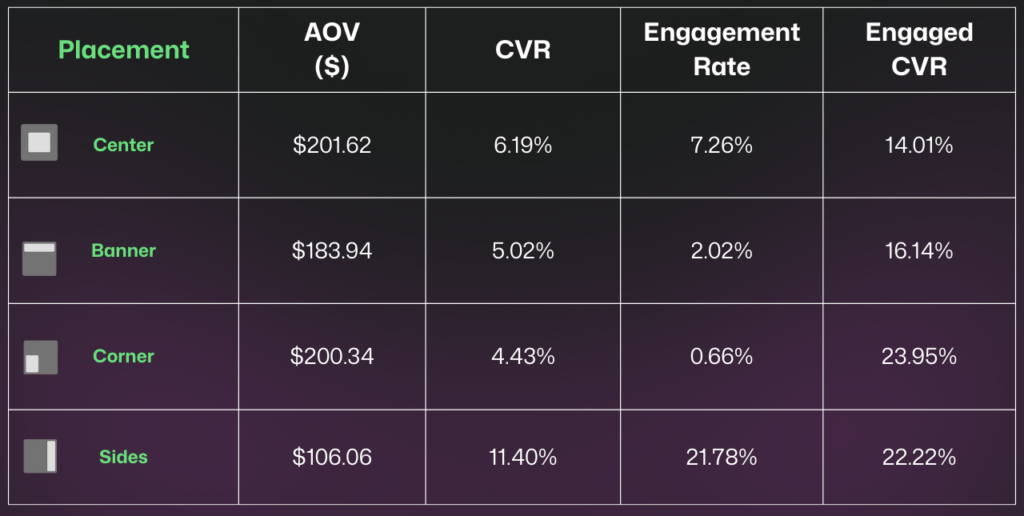
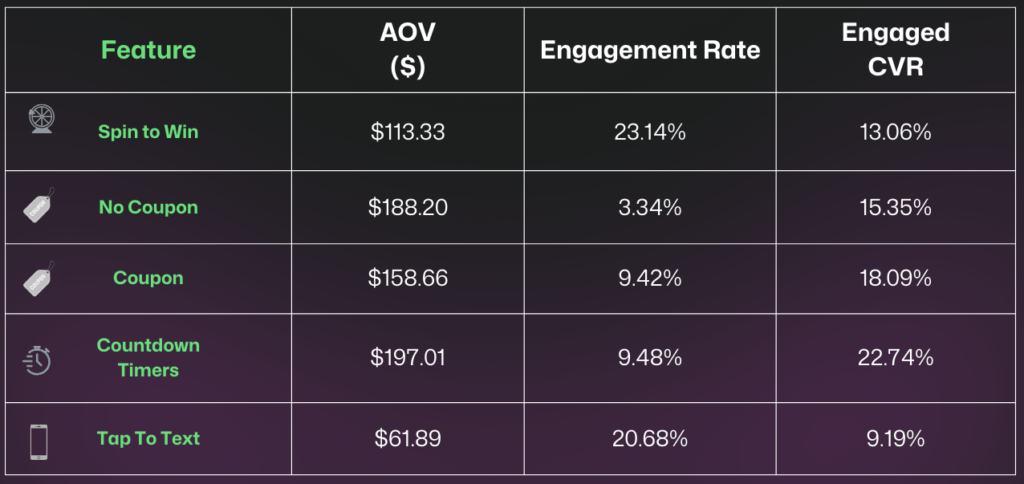
Let’s dive into some real-life examples and suggested use cases for health & fitness (or wellness) brands looking to convert more website visitors into customers.
1. Lead Capture: Additional Info
Email pop-ups are a fundamental part of your onsite conversion strategy, but they can provide a wealth of data beyond simply contact info. You can use them to let visitors indicate preferences, provide additional information, and more, with multiple fields to collect zero-party data for added personalization.
E-commerce health & fitness brands are in a unique position by being able to market to specialty/niche shoppers who may have trouble finding specific products for their needs. If you have different lines for diets or goals you can know what visitors are looking for by adding radio buttons to your lead capture.
Self-segmentation via product preferences immediately allows your welcome series to take a step up in terms of personalization and customer experience. Plus, this prevents you from emailing them about products they won’t care about.
This example from DripDrop ORS, a hydration company is a little different where instead of product interests they asked new subscribers which of their charity causes they’d like to hear about. A great way to provide new opt-ins with relevant information about one of the core tenets of their brand!
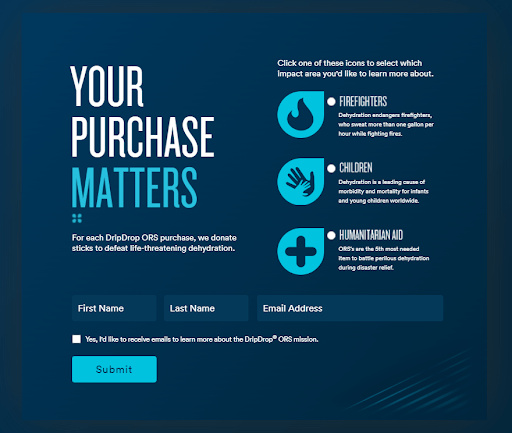
This is just one of the pop-ups they used to achieve a stunning 120% growth in SMS and 31% in email sign-ups month over month.
Now if you want even more information or just don’t want to add another field to your lead capture…there’s hope. Justuno’s data enrichment feature automatically appends known information to emails as they are opted in on your pop-ups. Use this data for immediate personalization onsite or sync to your other apps to use in subsequent messaging.
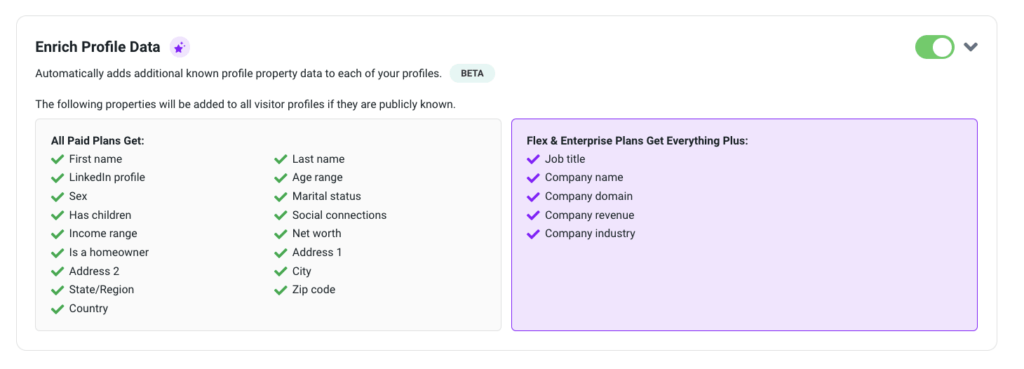
2. Quiz/Survey
This is very similar to the strategy above but has more than one question and is aimed at building a persona. Build your quiz to get down to the nitty gritty and help provide product education along the way so that visitors not only feel confident in your brand by the end but understand how the products that are recommended will solve their problem. Feed these data points into your MarTech stack for future personalization and segmentation purposes as well.
3. Gamification
This is a great strategy for health & fitness brands as the engagement rate for spin-to-wins was 23.14% and of those visitors 13.06% converted. There’s a lot to be said about the gamification aspect when it comes to enticing shoppers and adding a more involved approach to your onsite opt-ins. These can be super custom as well to really drive home branding and make a memorable first impression.
This is a custom mystery prize example from one of our vitamin customers, Mega Food. Their product design is the main focal point and helps create an engaging opt-in experience.
4. Product Launch or Out Of Stock Sign-Ups
If you’re wanting to build buzz before a big product drop, you can collect subscribers with a “pre-orders” type lead capture to have them get early access to your latest and greatest, Alternatively, if you’ve been experiencing supply chain delays, you can collect out-of-stock sign-ups for them to be alerted once it’s available again. . We suggest using faster channels like SMS or push notifications here since this high-intent segment will want to purchase quickly before you sell out again.
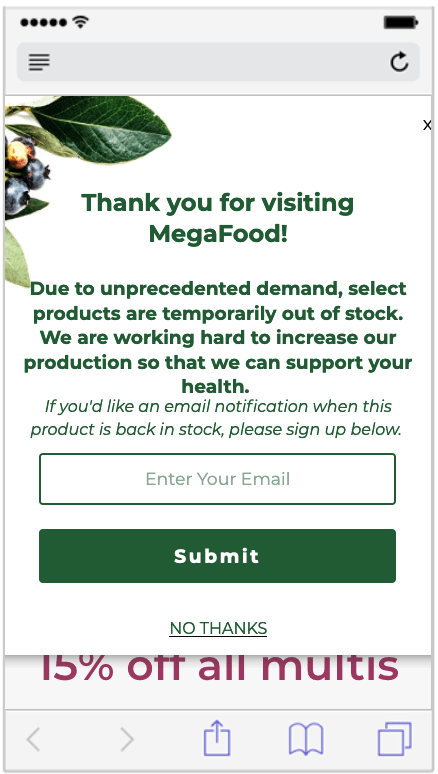
5. SMS Lead Capture: Tap-To-Text
Health & fitness brands that use Justuno’s tap-to-text feature for collecting SMS opt-ins for mobile traffic are seeing great results. The opt-in rate for these promotions is 20.68% (higher than the industry opt-in average) and on average 9.19% of those subscribers convert.
This is the easiest way to grow your SMS list with just two taps for visitors to opt-in—if you’re a health & fitness brand that’s already using SMS or is looking to start, make sure to use tap-to-text to collect those opt-ins to maximize not only your list size but your conversion rate!
6. Lead Capture: Instagram/TikTok Handles
Health & fitness brands can rely heavily on visuals, and there’s nothing more visually powerful for consumers than seeing your products on real people, i.e., user-generated content (UGC).
For e-commerce health & fitness brands, collecting Instagram and TikTok handles is just as, perhaps even more, important as emails or phone numbers. Sync these handles to an influencer marketing platform like Gatsby to identify your customers who have influence and may be good for your ambassador program with an automated journey from activation to compensation.From rewarding UGC posts with loyalty points to re-sharing the content and even building a formal influencer marketing partnership—it all starts with collecting handles.
7. Influencer-Specific Targeting: Greetings
If you are working with influencers, then you’re well aware of the opportunity they provide health & fitness e-commerce brands—but are you making the most out of these campaigns?Create a promotion for each influencer you work with to greet their audience and mirror messaging onsite (for example, their name, exclusive discount code, etc) via UTM targeting. This is a small but impactful way to start personalizing their followers’ experience from the start. If you really want to take this to the next level, use the influencer’s content in the promotion for instant recognition!
8. Influencer-Specific Targeting: Product Recommendations
In addition to a welcome pop-up greeting influencer traffic, create a product recommendation carousel targeting this traffic, suggesting other products that were part of the campaign or content. Use wording like “Kelsey’s Routine” or “Get Dani’s Outfit” to drive home the personalization and generate FOMO amongst their followers.
9. Paid Ads Mirrored Campaigns
For your ads on Instagram, Facebook, TikTok, Google Shopping, etc., you’ll want to create campaign-specific promotions corresponding to their messaging. Greet this traffic with mirrored content (keyword, offer, etc.) from what drove them to click in the first place. This easy access to their code/coupon, seeing the word(s) they searched, similar visuals, etc., will drive instant recognition and personalization.
This also works for non-paid ads but generalized media mentions. If you were put into a blog or publication (paid or not), provide them with a UTM link to your website so you can show visitors from that content specific messaging and incentives.
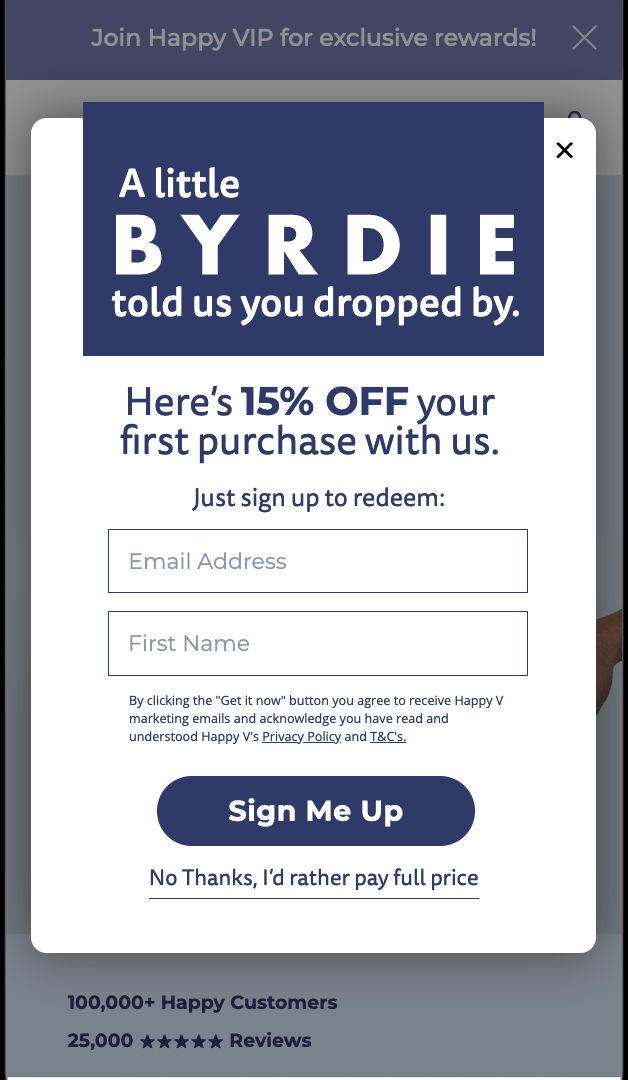
10. Virtual Showroom
For e-commerce health & fitness brands, it can be important to provide an ‘in-store like’ experience but that becomes even more important at higher price points for items like saunas, cold plunges, workout equipment, etc. where a 1:1 connection is crucial to conversion. Using platforms like Feel, which provides virtual sales experts in online showrooms that natively integrate into storefronts, is the answer. But how do you promote this seamless shopping experience? Through a pop-up, of course!
11. Home Page Best Sellers
Putting your best sellers on your home page is the most efficient way to make sure new visitors see the products that they’re most likely to convert on. Of course depending on what kind of retailer you are and the size of your product catalog this may or may not be logical. If you only sell 3 things and they’re all super expensive then you just have your 3 products on the home page but for those with more SKUs and varying price points this is a great way to ensure top products = one of the first things people see when they land on your site.
12. In-Page Blog Carousel
For health & fitness brands that have blogs—adding product recommendations directly into articles can be a game-changer for getting more out of organic traffic coming to those pages.
Whether you’re writing about a new workout circuit to try and linking the equipment you’re talking about or creating gift guides for holidays,in-page product recommendations will save the day. These are a great way to provide easy access to readers to the products they’re learning about while decreasing the likelihood of browse abandonment or distraction.
This is a great example in action from Dr. Axe, a supplement company where they have recipes on their website for their products with the product recommendations directly embedded in the page for a quick add-to-cart experience for readers.
13. Product Description Page
Product recommendations are most commonly found on product pages, and for good reason! This is where you can show shoppers complementary and related products they might be interested in, increasing their page count and ultimately driving them toward conversion. Don’t miss out on this as a fitness brand, and make sure to suggest related items based on color, type, or even collection to maximize engagement.
Our customer, Hylete, used product recommendations on their product page for cross-sells which had an average 30% engagement rate and drove nearly $200K in revenue.
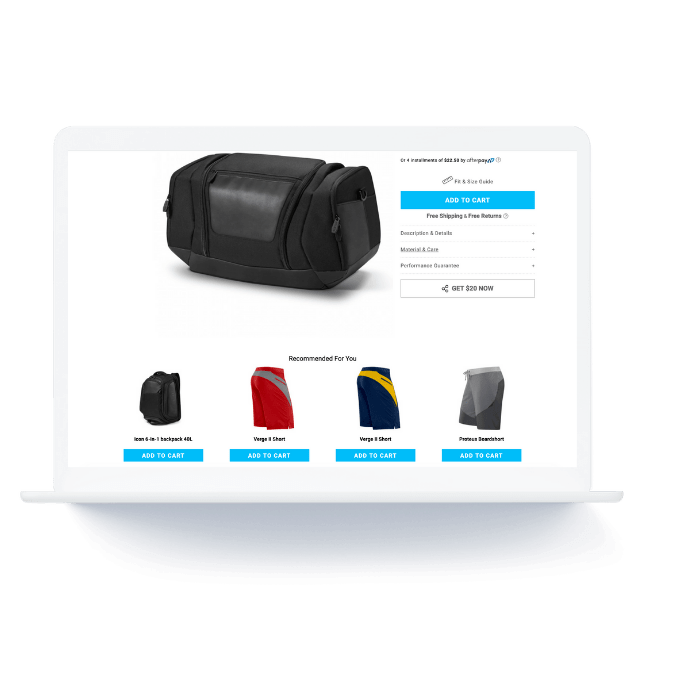
14. In-Cart Add-Ons
For health & fitness brands who prefer to go the in-cart route with product recommendations, that works just as well! Use the cart page or slide-out cart to place low-profile recommendations based on shopper behavior, cart content, best sellers, etc.
This is great for last-minute add-ons and impulse purchases but can be effective as well for larger items! A/B test to see if a smaller accessory is more enticing than a larger item depending on what you sell. Or if selling products in a larger product bundle at once like a 3 or 6 month supply vs. one month tests better!
15. Add-To-Cart Cross-Sell
Once a shopper has added something to their cart, you can trigger a Justuno product recommendation to appear in a pop-up immediately. Use this for a free gift option or simply to cross-sell related/complementary items. If they’ve just added a protein powder to their cart, maybe they need a shaker or a sample of a similar flavor. It never hurts to provide the option.
For health & fitness brands depending on what they sell can be framed as:
- Workout Clothes “ Complete the Look”
- Workout Equipment “Finish Your Set Up”
- Supplements “Round Out Your Routine”
When someone adds an item to their cart, trigger a carousel featuring all the other items in the product photos—this is a strong incentive on its own, but you can add an offer or exclusive discount on the full set/product line to drive same-session sales.
Another way to do this is with a bundle that is cheaper than purchasing items individually. Use purchase and behavioral data to identify commonly bought together products and build those into a bundle. Then when someone adds one of the items to a cart trigger a pop-up offering them their special bundle price. This will help raise AOVs while also expanding their product exposure hopefully increasing future purchase likelihood. And the customer is getting a clear deal with bundle pricing as their value add for a win-win all around.
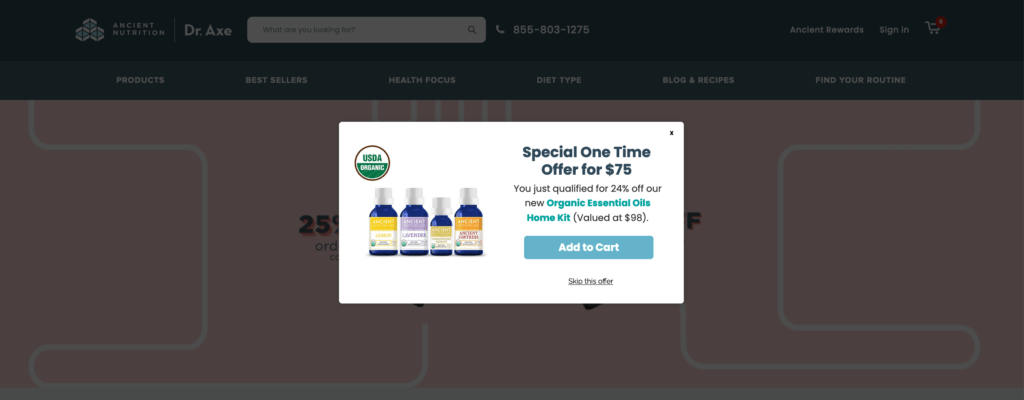
16. Shipping Threshold Banner
The cost of shipping has been on the rise, which, for many clothing brands, can be a huge factor in profit margins. Lower AOVs can eat into profit margins with free shipping, which is something consumers increasingly expect. If this is a struggle for you, we suggest offering free shipping, but only at the order value that makes it profitable for you. Let visitors know by using dynamic shipping banners that show how much more they need to spend to unlock free shipping.
You’ll reduce abandoned carts by letting visitors know ahead of time that shipping isn’t always free; plus, as they shop, the banner automatically updates, creating a more personalized, dynamic experience.

17. Geo-Targeting
If you are in local stores (or have brick-and-mortar locations), create geo-targeted pop-ups showing only to visitors within a specific area. Justuno can narrow all the way down to the zip code, so you can be exceptionally granular with these. Options include:
- Cart abandoner to find local stores (great if shipping timelines are a concern)
- Buy online, pick up store for faster fulfillment
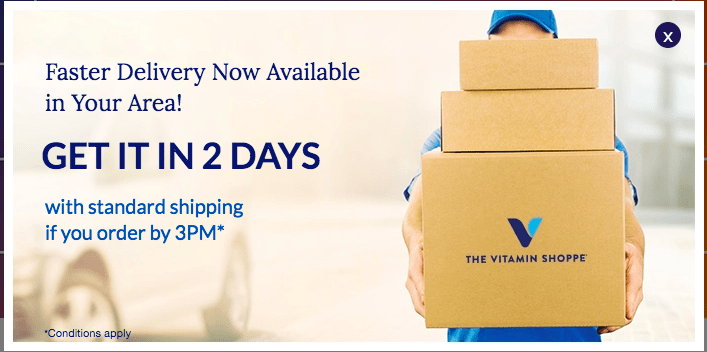
- Finding out-of-stock colors, flavors, or sizes in stores
- Pop-up events
- Shipping delays for different areas. This is crucial for transparency with shoppers, as delays in orders for can be frustrating. Communicate to visitors in areas where you’re experiencing delays, with a banner informing them of this, to build trust and transparency. Or the opposite if you now have shorter lead times than before and can fulfill orders faster.

- Market Research: Want a totally free way to conduct research to see if you should expand into a new country/market? That’s what Tonal did with their geo-targeted banner asking visitors in Canada if they should expand.

If you have some in-person placements in retailers, an upcoming pop-up shop, etc. you can create location-based pop-ups targeting those leaving your site. These can push them to check out your products in person to calm doubts about purchasing something expensive for their home online + if you can fulfill from these storefronts you’ll also squash shipping concerns at the same time!
Lots of DTC brands are using pop-up shops in their hottest markets, if you’re doing this make sure to publicize on your website in addition to via email/SMS channels.
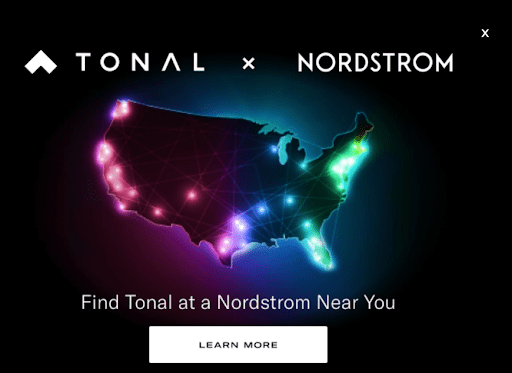
18. Exit Offer: Product Finder
Sometimes, the sheer number of choices can be overwhelming to a customer, or if they’re unsure of what is the right choice for their routine—it can be easy to simply leave your site.
A great tool here for product education (and a chance to collect zero-party data)–is to use a product finder quiz on an exit offer. Usually, this works best for health & fitness brands when the item is expensive (AKA has a long research phase) or is consumable and people don’t want to waste money on something they won’t like/won’t work.
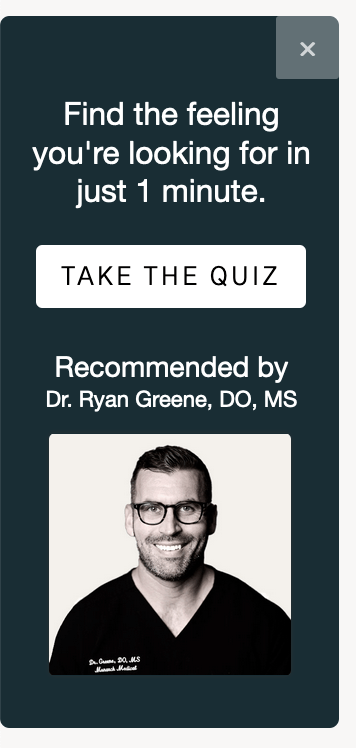
The education component is what is the key here. Using a quiz as an exit offer can provide more value than a discount code since these shoppers are in need of information to fix their objections.
19. Cart Abandoner: Reviews
One of the biggest roadblocks for shoppers online is being unsure about the fit, how the product really will look in person or if it will really work. Use a testimonial for social proof giving them confidence that your product is right for them.
Find reviews that specifically mention how the product functions or the supplements tasted and combine that with some great UGC from your reviews section. Then create a version of this cart abandoner for different shopping segments (this may be harder if you have a large product catalog). Use Justuno’s advanced targeting rules to set this up to trigger based on certain products (Protein Powder vs. Collagen)–so that those with certain products in their cart will get their own experience.
20. Cart Abandoner: Returns Policy/Satisfaction Guarantee
Shopping online is much harder to justify a conversion on if you’re unsure about a brand and the returns policy isn’t clear. If you have a free and easy returns process or satisfaction guarantee—this is the ideal point to showcase it. The shopper is interested enough to add items to their cart but just weren’t quite sold yet.
Proactive returns policy knowledge or a guarantee is perfect for this segment; reiterating the no-risk aspect of their purchase removes barriers or hesitation to drive same-session conversions without reducing profit margins. Combine with a timer for maximum FOMO and to drive immediate action.
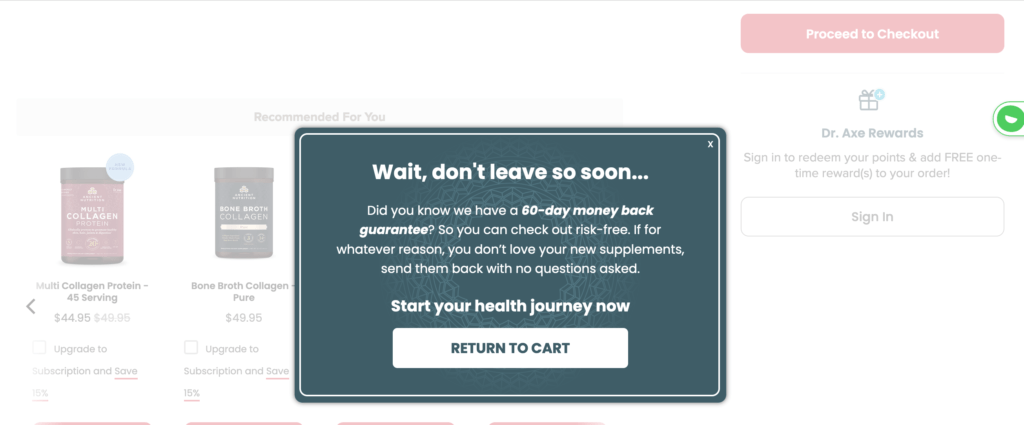
21. Cart Abandoner: BNPL or Financing
Buy now, pay later (BNPL) technology is increasingly common on e-commerce sites, including health & fitness. Consumers love the easy four installments, and for those with higher price points, this is a great way to help consumers afford their carts. Make sure to prominently display this option at various stages on your website, like Tonal did with this banner. Their core product is a very expensive workout machine and by showing the price per month of financing instantly removes the financial burden that would’ve been a roadblock for many.
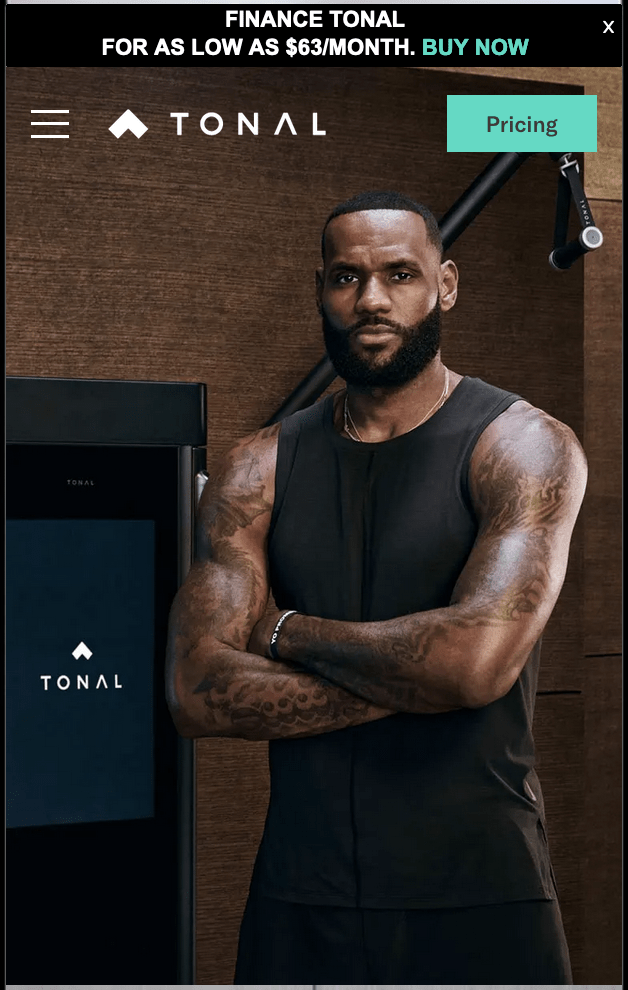
But for sure if someone goes to abandon a cart over a certain dollar amount, fire an exit offer reminding them to buy today and pay over time.
Payment platforms have turned into conversion funnels themselves, and having them can be the difference between making a sale and losing out on a customer. Even if you do not want to leverage BNPL, one-click checkouts like ShopPay, AmazonPay, or Paypal make checkout easier for customers and can streamline your BOFU.
22. Returning Cart Abandoner
If a shopper abandons their cart but ends up returning—use a side or corner promotion to remind them of the really cool items they left behind! Dynamically pull in the product image, name, and price to the promotion, along with a CTA taking them directly to checkout.
This personalization makes it easy for them to convert without having to go back and re-add items or look at their cart. Just one click and they’re already at the point of conversion!
23. Product Launch Exit Offer
Another exit offer option that’s a non-discount is one that’s just a “hey did ya hear the news” kind of thing. If you’ve recently rolled out a new product or variation use that to capture attention of exiting visitors who may not know about it.
That’s exactly what our customer HappyV a women’s supplement brand did. They used un-gated pop-ups for product education and awareness. High engagement rates for both desktop (26.4%) and mobile versions (16.5%) meant a large percentage of Happy V’s traffic clicked through to learn more and many of them converted in that same session as well!
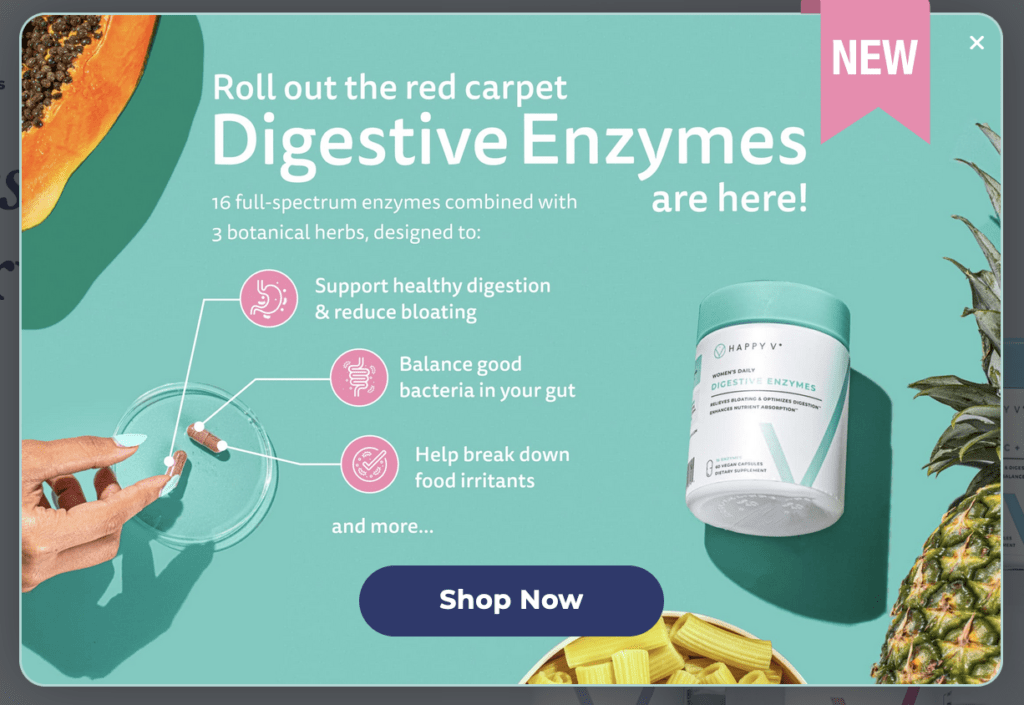
See more of what HappyV did in their case study including growing their list by 14X.
24. Loyalty Program Sign-Up
Loyalty programs are one of the best ways to gamify retention for a consumer making it fun and easy to rack up rewards. If a customer checks out but isn’t logged in—show them a promotion encouraging them to sign up and earn something from today’s purchase, like double points or a free gift added to their shipment, etc.
Since we know it can be difficult for some health & fitness brands to build strong customer loyalty, especially if they sell more “one-time” purchases like a large piece of workout equipment. Compared to those selling something you consume which will obviously need to be replenished or clothing where it’s common to have multiple versions of an item.
Retention plays are crucial in strengthening relationships and providing customers a reason to come back even if it’s a long time between sales.
25. Membership or Loyalty Program Products
In the same vein as collecting program sign-ups, you can target returning customers who purchased before but haven’t signed up for your loyalty program. Similar to how a vitamin brand might target non-subscribing customers, you can target these shoppers with exclusive products to access or VIP colors. You could also use this as an incentive for lead captures earlier in the customer journey—everyone loves a limited edition color or item to make them feel special!
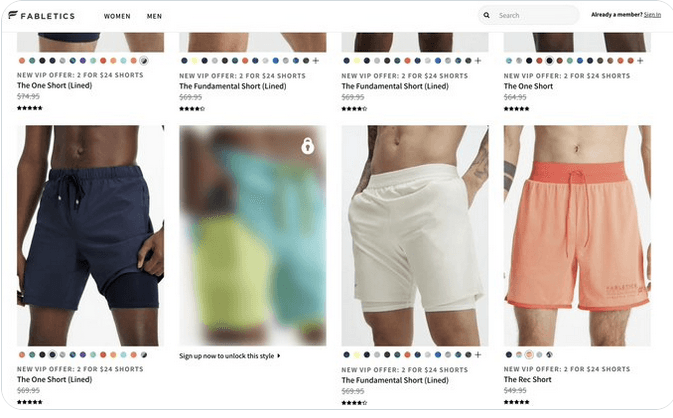
26. Refer a Friend Tab
For repeat customers sometimes incentives for sharing the love can come in the form of a referral reward. And if you want to keep it non-intrusive just put it in a tab! Target repeat customers of a certain lifetime value, purchase frequency, etc. it’s up to you.
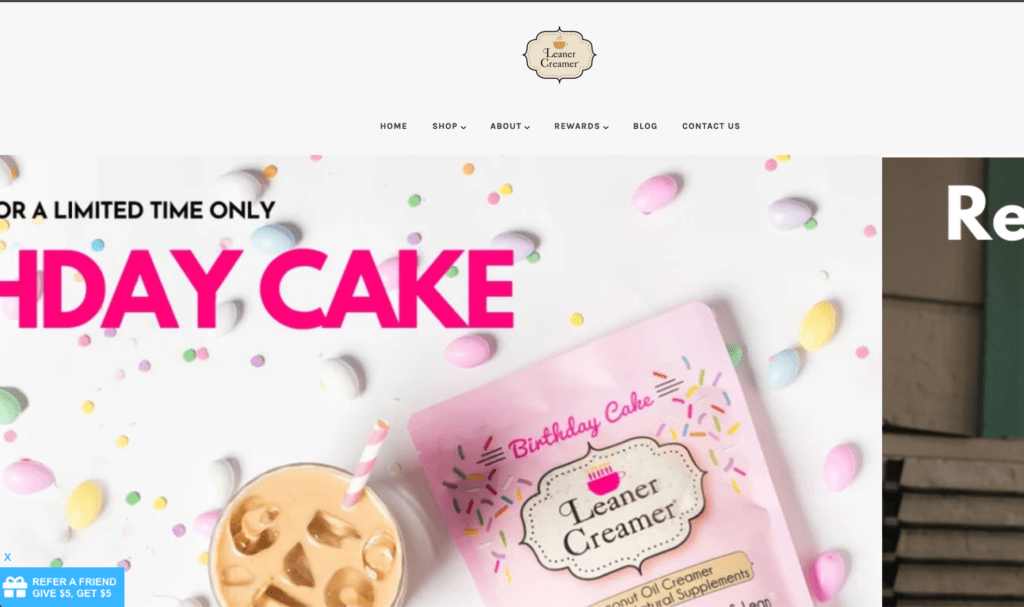
27. Non-Discount Alternatives
While coupons are very common for health & fitness brands and successful for driving engagement, promotions without a coupon were engaged with less than one that did. They’re not necessarily the only option; in fact, traffic that engaged with a promotion without a coupon converted just a little less (15.35%) than traffic that had a coupon (18.09%) and with a higher order value ($188.20 vs. $158.66).
A great option for a health & fitness brand that is not using a coupon is to leverage a gift card. And the best way to do this is via a threshold banner—specifically to drive up average order values to unlock it! Use messaging like “Spend $300 and get a $50 gift card” with the right order total and gift card amount for your profit margins.
This is a great strategy to use during BFCM to drive repeat purchases or encourage those shopping for others to save a little something for themselves to use later on.
28. Post-Purchase: Additional Channel Opt-Ins
Did you know that order tracking pages are checked an average of five times between when an order is placed and when the customer receives it? That makes post-purchase one of the most important touch points in the customer journey! You’re setting the stage for their relationship with your brand before they even receive the products and, hopefully, a repeat purchase.
Use this page to collect additional channel opt-ins that a customer hasn’t signed up for yet. This could be SMS, Instagram, TikTok, etc., as a secondary channel to re-target and engage them on.
For SMS, use messaging like “Get order updates”; for Instagram/TikTok, say “Tag us in your gym,” etc.
By encouraging them to interact with your brand on other channels, you’re deepening the relationship and keeping your options open for the future.
29. Post-Purchase: Product Recommendations
If you’re all set on channel opt-ins, use these order tracking pages to sow the seeds of interest for their next purchase. Place in-page product recommendations based on their order contents to get them looking at your other items. If they purchased just the workout top, show matching shorts or leggings. If they purchased your protein powder, show them pre-workout mix.
30. Collabs (Influencers/Brands)
Finally, we’ve had a lot of health & fitness companies run very successful onsite campaigns featuring collabs. This joint effort can be with a brand that has a complimentary target audience or with an influencer to develop a collection available for a limited time. The two keys to success here are: audience alignment and limited-time access/FOMO.
Collabs can tell a strong visual story which is key for wellness brands and can drive interest/engagement while unlocking new audiences for you. Create targeted onsite lead captures based on traffic source, trigger product recommendations based on behavior, and then re-target those who purchased these exclusive items in the future with campaigns featuring VIP/limited access messaging! A successful collab will leverage several of the strategies outlined above but can be a real revenue source when done right by health brands!
This example is Theragun (workout recovery equipment) teaming up with Beis (luggage company) for a new line of travel sized options.
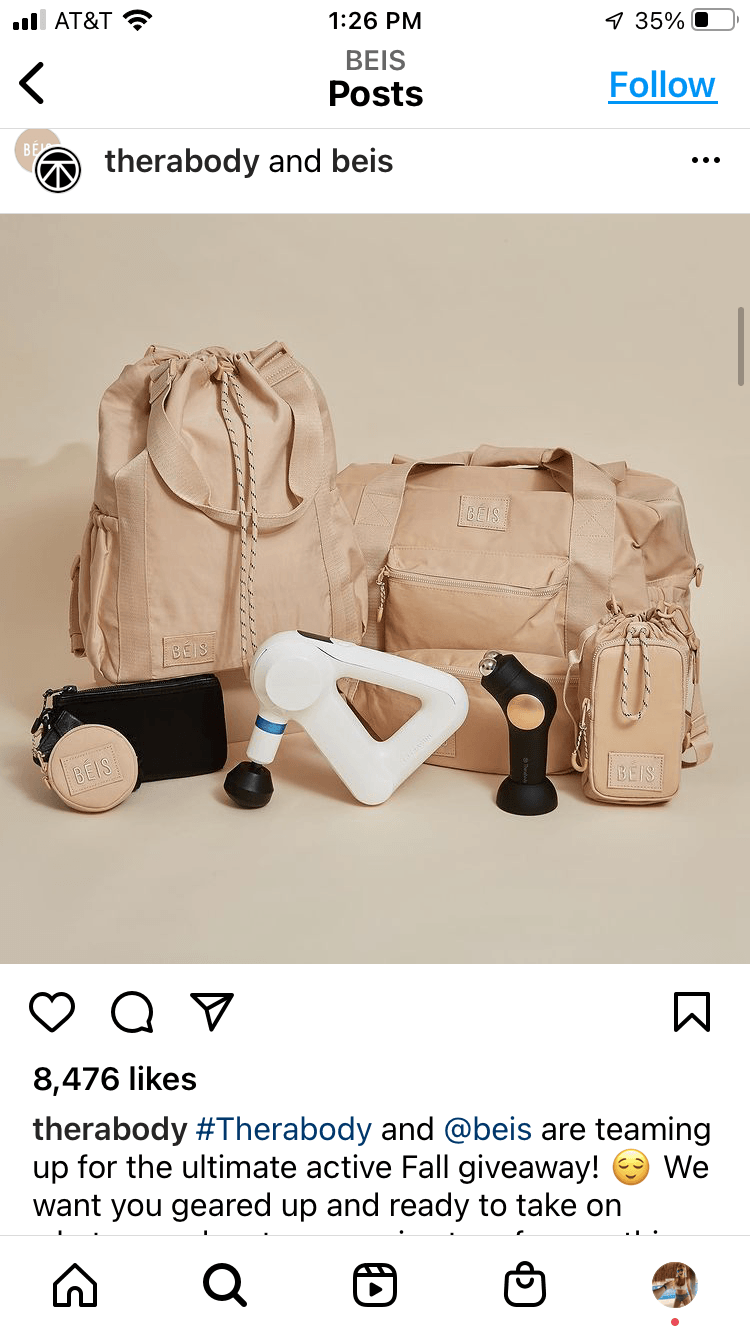
Health & fitness is a booming e-commerce vertical, and these are just some of the potential strategies to implement when looking to optimize your onsite experience. Justuno is the leading conversion optimization platform for brands when it comes to personalized, scalable onsite messaging, as you’ve seen above.
Try us out with a free 14-day trial or schedule a demo to see how Justuno can take your health & fitness (wellness) brand to the next level.
